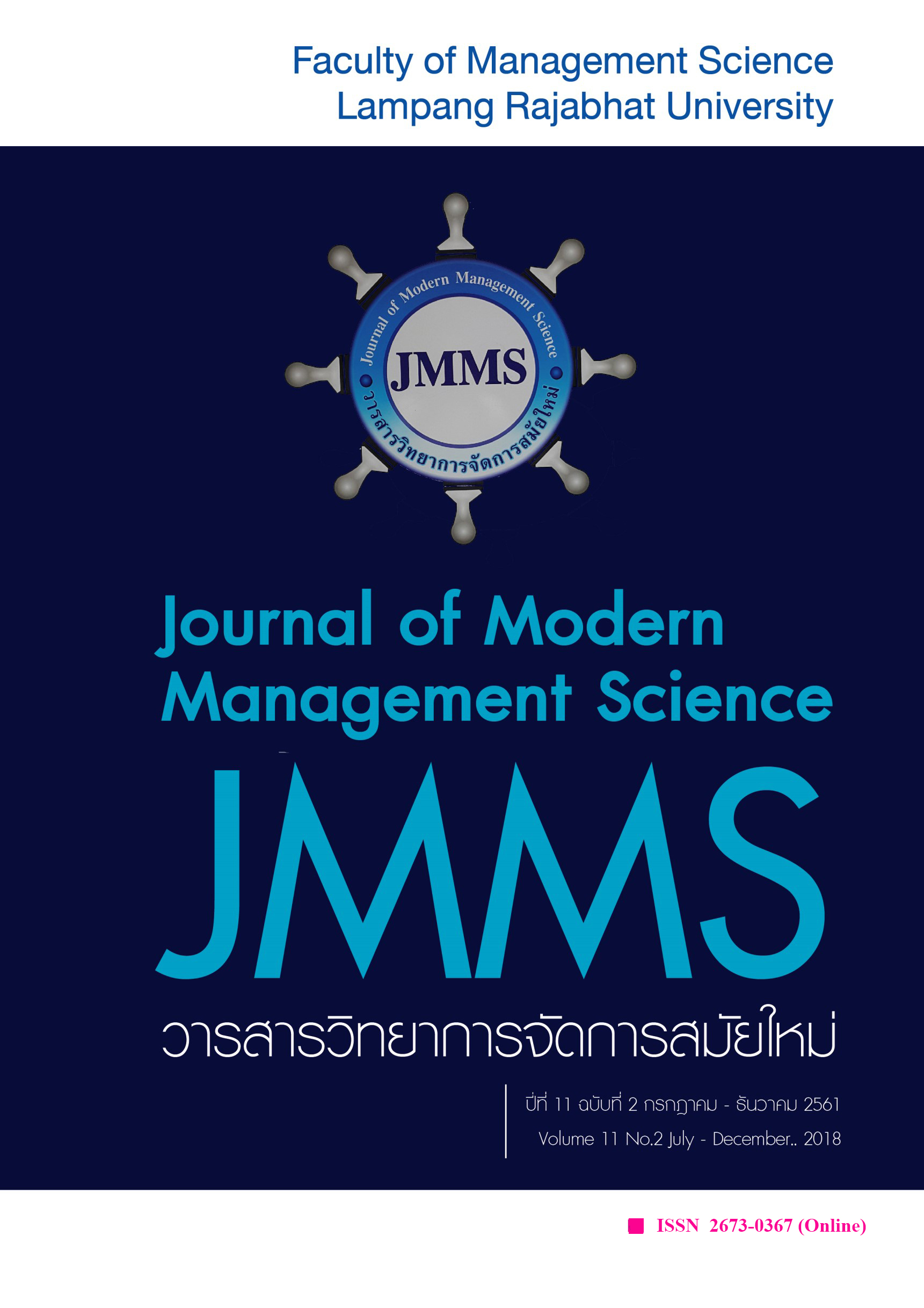The Impact of Corporate Income Tax Planning on Firm Value : An Empirical Evidence from Listed Companies in Thailand
Main Article Content
Abstract
This study aims to investigate the effect of corporate income tax planning on firm value during the year 2014-2016. The sample comprises of 873 firm-years. Corporate income tax planning was measured by effective tax rate (ETR) and the ratio of corporate income tax to total assets (TAX/ASSET). The firm value was measured by Tobin’s Q. Data analysis used multiple regression analysis. The paper found that corporate income tax planning had negative effects on firm value, especially, companies that did not employ BIG4 auditing firms. Regarding control variable, the study found that firm size had negative effects on firm value. However, leverage, profitability and capital intensity had positive effects on firm value. The findings provide guideline for listed firms in managing capital and resources more efficiently.
Article Details
The article must be considered and accepted for publication by the editorial board of the Faculty of Management Science, Lampang Rajabhat University. The articles have been reviewed by a peer (peer review) and the author must update according to the suggestion if available before publication. Articles that are not considered the editorial team will inform the results of the consideration but will not send the original to the author.
JMMS is the Faculty of Management Science journal, Lampang Rajabhat University. Jmms published both print and online editions. We allow the use of articles for academic use under the scope of copyright law.
References
ธัญพร ตันติยวรงค์. (2552). การศึกษาปัจจัยที่มีอิทธิพลต่อการวางแผนภาษีและความสัมพันธ์ระหว่างการวางแผนภาษีกับมูลค่าของกิจการ: หลักฐานเชิงประจักษ์จากประเทศไทย. วิทยานิพนธ์ บช.ด., จุฬาลงกรณ์มหาวิทยาลัย, กรุงเทพมหานคร.
พิชญ์ณัฎฐ์ เสงี่ยมกลาง และ ชุติมา นาคประสิทธิ์. (2559). ความสัมพันธ์ระหว่างการกำกับดูแลกิจการกับการเลือกผู้สอบบัญชี: กรณีศึกษาบริษัทจดทะเบียนในตลาดหลักทรัพย์แห่งประเทศไทย. วารสารชุมชนวิจัย, 10(3), 73-85.
สัตยา ตันจันทร์พงศ์. (2558). การกำกับดูแลกิจการที่ดีมีอิทธิพลต่อผลการดำเนินงานผ่านการวางแผนภาษีของบริษัทจดทะเบียนในตลาดหลักทรัพย์แห่งประเทศไทย. วารสารสมาคมนักวิจัย, 20(2), 105-113.
Alfraih, M. M. (2016). The Role of Audit Quality in Firm Valuation: Evidence from an Emerging Capital Market with a Joint Audit Requirement. International Journal of Law and Management, 58(5), 575-598.
Chen, Z., Cheok, C. K., & Rasiah, R. (2016). Corporate Tax Avoidance and Performance: Evidence from China’s Listed Companies. Institutions and Economies, 8(3), 61-83.
Chen, X., Hu, N., Wang, X., & Tang, X. (2014). Tax Avoidance and Firm Value: Evidence from China. Nankai Business Review International, 5(1), 25-42.
Chung, K. H., & Pruitt, S. W. (1994). A Simple Approximation of Tobin’s q. Financial Management, 23(3), 70-74.
Dyreng, S. D., Hanlon, M., & Maydew, E. L. (2008). Long-Run Corporate Tax Avoidance. The Accounting Review, 83(1), 61–82.
Hair, F., Black, W., Babin, B., & Anderson, R. (2010). Multivariate Data Analysis (7th Ed.). New Jersey: Pearson Education.
Lee, H. L., & Lee, H. (2013). Do Big 4 Audit Firms Improve the Value Relevance of Earnings and Equity? Managerial Auditing Journal, 28(7), 628-646.
Lestari, N., & Wardhani, R. (2015). The Effect of the Tax Planning to Firm Value with Moderating Board Diversity. International Journal of Economics and Financial Issues, 5(Special Issue), 315-323.
Modigliani, F., & Miller, M. H. (1963). Corporate Income Taxes and the Cost of Capital:
A Correction (in Communications). American Economic Review, 53(3), 433-443.
Raedy, J. S., Seidman, J., & Shackelford, D. A. (2010). Book-Tax Differences: Which Ones Matter to Equity Investors? Retrieved December 25, 2016, from https://accounting. wharton.upenn.edu/documents/seminars/wharton%20draft%20916.pdf.
Santana, S, & Rezende, A. J. (2016). Corporate Tax Avoidance and Firm Value: Evidence from Brazil. Retrieved December 5, 2017, from: https://papers.ssrn.com/sol3/papers.cfm? abstract_id=2803993
Tang, T. Y. H. (2016). The Value Implications of Tax Avoidance across Countries. Retrieved April 25, 2017, from: https://papers.ssrn.com/sol3/papers.cfm?abstract_id =3055853
Wahab, N. S. A., & Holland, K. (2012). Tax Planning, Corporate Governance and Equity Value. The British Accounting Review, 44(2), 111–124.
Wang, Y. F., & Huang, Y. T. (2014). How Do Auditors Increase Substantially Firm Value? Internaltional Journal of Economics and Finance, 6(10), 76-82.

